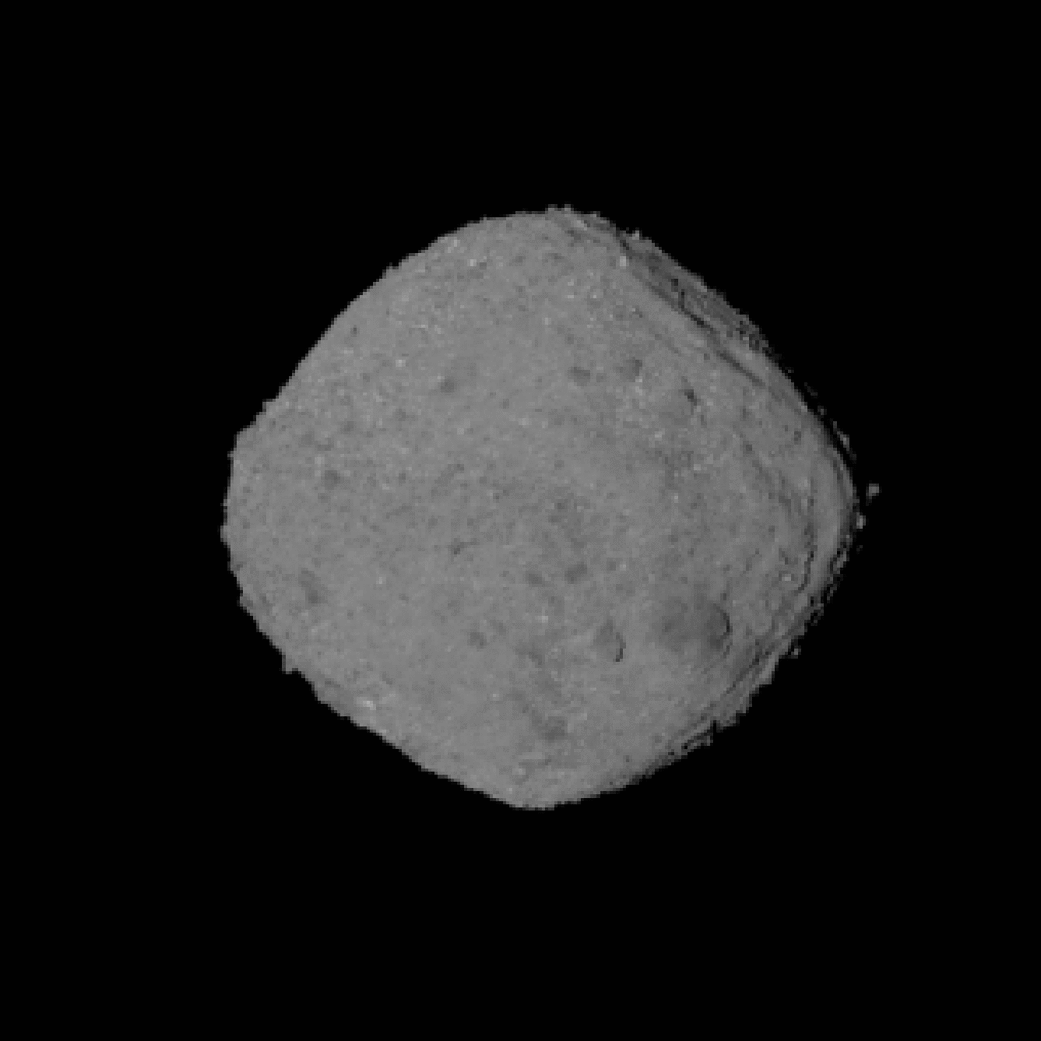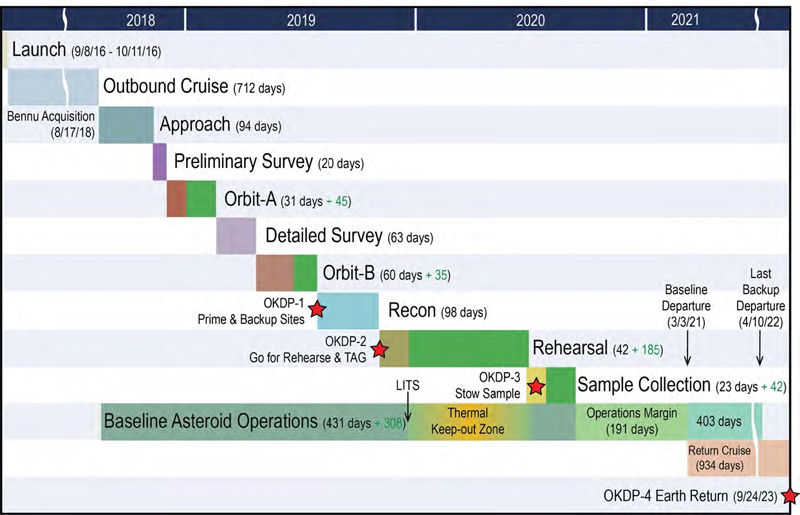
4th December 2018 NASA probe reaches asteroid Bennu NASA has confirmed the arrival of the OSIRIS-REx spacecraft at the carbonaceous asteroid Bennu after a two-year journey.
NASA’s Origins, Spectral Interpretation, Resource Identification, Security-Regolith Explorer (OSIRIS-REx) probe completed its 1.2 billion mile (2 billion km) journey to Bennu yesterday. The spacecraft executed a manoeuvre that transitioned it from flying toward Bennu to operating around the asteroid. Now, at 11.8 miles (19 km) from Bennu's Sun-facing surface, OSIRIS-REx will begin a preliminary survey of the asteroid. The spacecraft will commence flyovers of Bennu's north pole, equatorial region, and south pole, getting as close as four miles (7 km) above the surface during each flyover. The main science goals of this survey are to refine estimates of Bennu's mass and spin rate, and to generate a more precise model of its shape. This data will help determine potential sites for later sample collection. OSIRIS-REx's mission will help scientists investigate how planets formed and how life began, as well as improve our understanding of asteroids that could impact on Earth. Bennu itself – a carbonaceous rock about 500m (1,640 ft) in diameter – has a small (1 in 2,700) chance of hitting Earth between the years 2175–2199. If such an impact were to occur, the expected kinetic energy associated with the collision would be around 1,200 megatons in TNT equivalent, or 24 times greater than the Tsar Bomba, the most powerful nuclear device ever detonated. Asteroids are remnants of building blocks that formed the planets and enabled the earliest life, billions of years ago. Those like Bennu contain natural resources, such as water, organics and metals. Future space exploration and economic development may rely on asteroids for these materials.
"As explorers, we at NASA have never shied away from the most extreme challenges in the Solar System in our quest for knowledge," said Lori Glaze, acting director for NASA’s Planetary Science Division. "Now we’re at it again – working with our partners in the U.S. and Canada to accomplish the Herculean task of bringing back to Earth a piece of the early Solar System." OSIRIS-REx will collect at least two ounces (60 grams) of regolith from Bennu, returning it to Earth in 2023. It will be the first NASA mission to carry samples from an asteroid back to Earth and the largest sample returned from space since the Apollo era. It is also the first to ever study a primitive B-type asteroid, relatively rare bodies rich in carbon and organic molecules that make up life on Earth. It is also the first mission to study a potentially hazardous asteroid and try to determine the factors that alter their courses and bring them closer to Earth. "Initial data from the approach phase show this object to have exceptional scientific value," said Dante Lauretta, OSIRIS-REx principal investigator at the University of Arizona. "We can't wait to start our exploration of Bennu in earnest. We've been preparing for this moment for years, and we're ready."
Comments »
If you enjoyed this article, please consider sharing it:
|








